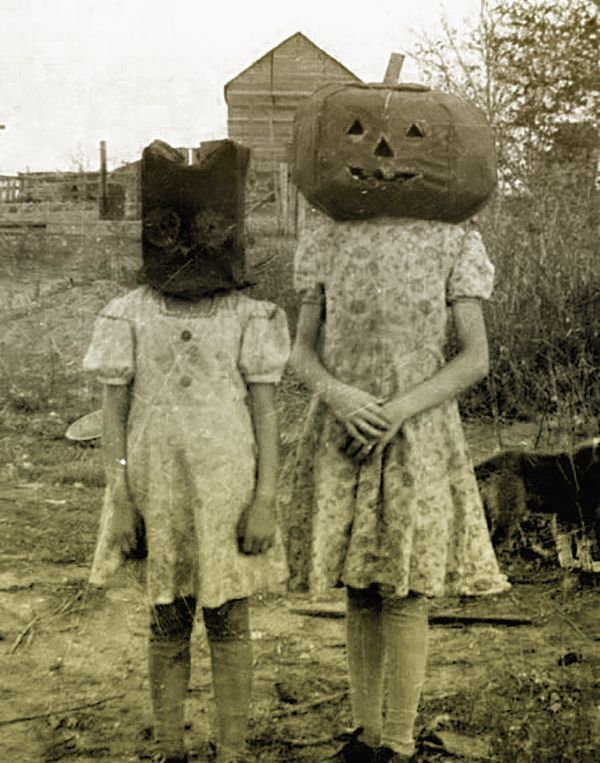The Ominous Origin of All Hallows’ Eve
October 28, 2022
Halloween, celebrated on October 31st, is inching closer and closer on our calendars with every day that passes. There are just three more sleeps left and the horrifying holiday will arrive! One of my own favorite traditions during Halloween is to look back at old photos of myself and my family in our costumes from over the years. Though, how far back in the past can these pictures go? When, and how, did such a famous holiday even begin?
Two thousand years ago, a group of people living in areas of Ireland, the United Kingdom, and northern France, named the Celts, celebrated their new year on the 1st of November. The Celts believed that on the night before the new year, the worlds of the living and the dead crossed. Therefore, they created an annual celebration of Samhain, to welcome the souls of the nonliving world back to Earth. The name Samhain means “summer’s end”, so the festival acknowledged the close of the harvest season and the coming of winter. With this holiday, those who had died and had not yet moved on could do so at this time and interact with the living to say goodbye. Thus, Halloween was born.
The Celts celebrated Samhain around large, sacred “bone fires” in which they would burn crops, animals, and bones. (Yes, the word would eventually become “bonfire!”) The Celts brought food for the spirits, celebrated, and told stories to each other. Unfortunately, they also expressed their fear that the spirits they previously had negative relationships with would recognize them at these bonfires and attempt forms of revenge. To prevent this, the Celts darkened their faces with ashes from the bonfires, and this act of disguising themselves soon developed into wearing masks and costumes.
Over time, the holiday evolved. As the Celts would often leave out food for the dead to indulge in, this would later be a correlation to trick-or-treating. Eventually, people began dressing up as ghosts and demons, performing antics in exchange for food and drink. The Catholic Church turned November 1st, the original date of Samhain, into a religious holiday called “All Saint’s Day” or “All Hallows”, making October 31st the date of “All Hallow’s Eve,” or, “Halloween.” Around the 19th century, the Irish came to the United States and brought some of their celebrations with them, including All Saints’ Day. When the holiday rolled around, the Irish immigrants would dress up in costumes, ask their neighbors for food, and pull pranks. The holiday didn’t exactly become popular until the early 1900s, and when it did, American candy companies started to produce and sell “Halloween-themed” candy that encouraged the tradition of trick-or-treating.
Another interesting detail to mention is the history of the jack-o’-lantern. It supposedly originates from the Irish folktale of Stingy Jack, a man who tricked the devil into banning him from hell, and yet, he could not enter heaven either because of his sinful life. Therefore, when he died, all he could do was simply explore the earth while carrying a lantern made of a turnip. On All Hallows’ Eve, the Irish carved turnips with faces and placed a lit candle inside to be protected from spirits like Stingy Jack while trick-or-treating.
The specific activity of trick-or-treating became popular in America during the 1930s, with the name first appearing in a national newspaper. Trick-or-treating is a Halloween tradition that includes people, usually children, going from door to door in different costumes and asking for candy. Since the Celts would usually leave out food and treats during the holiday of Samhain, the most likely origin of trick-or-treating is when Celts went to their neighbors’ homes, collecting food that they could provide at bone fires.
Halloween is quite the fun-filled holiday, with an incredibly interesting historical background. Knowing just how much it has evolved already, who knows how much it can continue to drastically change over time?




Laura • Oct 25, 2024 at 1:30 am
All Saints Day pre-dates Samhain according to written record by roughly three centuries, actually. It was not invented simply to replace an existing holiday, and in fact first started in Turkey, quite a distance from the Celts. Holidays were combined culturally as Christianity became more and more integrated into European society and gained more and more converts. It was a way to keep beloved traditions strong while moving towards a different faith.